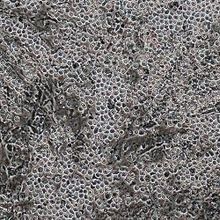 Researchers have generated blood stem cells and also blood progenitor cells (shown) from human pluripotent stem cells.RIO SUGIMURATwo teams of scientists have generated blood stem cells by reprogramming either human or mouse cells. In both cases, these hematopoietic stem cells successfully produced blood cells when implanted into mice.
Researchers have generated blood stem cells and also blood progenitor cells (shown) from human pluripotent stem cells.RIO SUGIMURATwo teams of scientists have generated blood stem cells by reprogramming either human or mouse cells. In both cases, these hematopoietic stem cells successfully produced blood cells when implanted into mice.
“This is important work,” Igor Slukvin of the University of Wisconsin School of Medicine and Public Health told The Scientist. Both studies advance scientists’ understanding of the pathways and cell signaling used to generate blood stem cells, he said. The studies were published today (May 17) in Nature.
In one study, George Daley of Boston Children’s Hospital and Harvard Medical School and colleagues used chemical signals to coax human pluripotent stem cells into becoming an embryonic tissue, called hemogenic endothelium. In the embryo, this tissue eventually turns into blood stem cells. Next, the team tested 26 transcription...
When the investigators transplanted the cells into bone marrow of adult mice, some of the animals’ blood and bone marrow developed precursors to red and white blood cells, as well as platelets and other cells, after a few weeks.
“We’ve demonstrated what is possible,” Daley wrote in an email to The Scientist. He said the main breakthrough of his team’s study was the identification of the specific transcription factors that lead to the reprogramming of the cells. That information can help researchers better understand how blood stem cells are made in the body and possibly what can go wrong in the process.
The authors note in the paper that “there is still a molecular and functional gap between our engineered cells and bona fide [hematopoietic stem cells] in their robustness of engraftment and full recapitulation of terminally differentiated cells.”
In another study, Shahin Rafii of Weill Cornell Medicine and colleagues reprogrammed adult mouse endothelium, tissue that lines blood vessels, using genes for the transcription factors Fosb, Gfi1, Runx1, and Spi1. They grew the cells in a vascular environment, a sort of bed of surrounding cells that provided signals to help reprogram the endothelium tissue.
Rafii told The Scientist in an interview that this vascular environment appears to be a key factor to successful reprogramming. He likened the relationship between the cells and the environment to a mother and a baby. “Mother provides nutrients for baby and supports it, without the mother, the baby doesn’t exist,” he said. “It’s the same for these cells.”
In both studies, some of the transcription factors used have been linked to leukemia. To test his team’s technique, Rafii and colleagues monitored the cells after they were implanted in mice and found no evidence of leukemia after 20 weeks. Still, longer follow-ups are needed, he said.
Stem cell biologist Mick Bhatia of McMaster University said in an interview that both studies demonstrated viable techniques for developing blood stem cells. Daley’s study is especially exciting, he said, because it could revive researchers’ faith in pluripotent cells. Progress in developing pluripotent cells and coaxing them into other cell types, especially blood stem cells, has been slow, with many roadblocks.
The new results, if confirmed by other labs, might help overcome those challenges, boosting the odds of moving the research from the lab to the clinic. But, one of the caveats is the use of some of the transcription factors, which have been linked to leukemia. Finding ways to drive the same reprogramming without those transcription factors will be the ultimate goal, Slukvin said.
R. Sugimura et al., “Haematopoietic stem and progenitor cells from human pluripotent stem cells,” Nature, doi:10.1038/nature22370, 2017.
R. Lis et al. Conversion of adult endothelium to immunocompetent haematopoietic stem cells. Nature, doi:10.1038/nature22326, 2017.
Interested in reading more?





